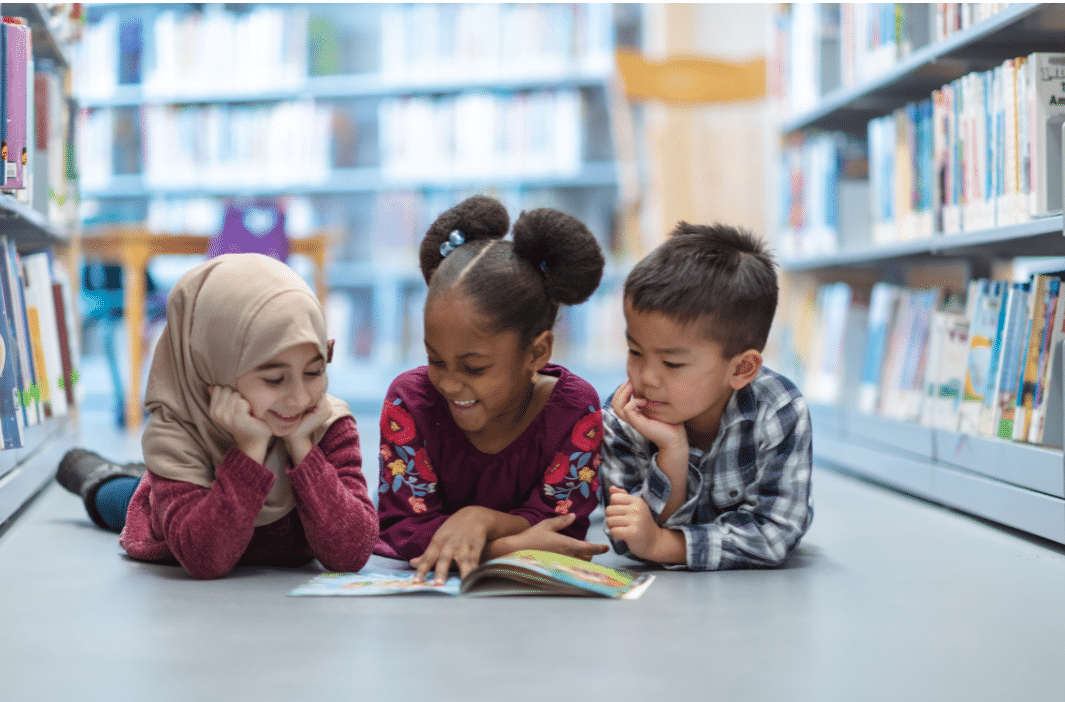Reading and Learning: How Kids Get From There to Here
One of the questions I often hear as a children’s librarian is, “Where are the books to help teach my child to learn to read?” Now, while I’m usually a firm believer that there’s no such thing as a silly question- this has to be one of the silliest to ever exits. That’s because, of course, that all books teach children to read, although probably not in the traditional sense that you might be thinking of.
The truth is, literacy (or “learning to read”) is really made up of lots of different pre-reading skills. According to the Every Child Ready to Read program (created by the Public Library Association and the Association for Library Service to Children), those skills include the following: print motivation, print awareness, narrative skills, vocabulary, letter knowledge, and phonological awareness. Let’s break those skills down one by one.
♦Print Motivation: Being interested in and enjoying books. Don’t worry if your child gets stuck on a single book and insists on hearing it over and over again- that still counts!
♦Print Awareness: Noticing print, knowing how to handle a book, and knowing how to follow the words on a page. This is a great opportunity to take advantage of a kid’s independent streak-when they insist on turning the pages, let them!
♦Narrative Skills: Being able to describe things and events and tell stories. Children’s stories can be rambling and occasionally confusing to listen to, but when they tell them, they’re hammering out how stories work. When they come up with “jokes” that are more bemusing than amusing, they’re exercising the same skill!
♦Vocabulary: Knowing the name of things- from concrete objects like farm animals to abstract ideas like feelings. The more words kids know, the more prepared they’ll be to encounter them in text.
♦Letter Knowledge: Knowing letters are different from each other, knowing their names and sounds, and recognizing letters everywhere. The best part about this skill is that it makes a great on-the-go game- how many letters can you recognize while you’re waiting in line at the grocery store?
♦Phonological Awareness: Being able to hear and play with the smaller sounds in words. This is where rhymes, two-letter sounds like “ch,” and even literary devises alliteration come into play.
So how do you go about practicing these skills? There are lots of different ways, but the single most important activity you can do to help build the foundation for eventual reading success in children is by reading aloud to them – especially during the preschool years. It’s kind of like the ole “chicken and egg” scenario; which came first? Did your child learn to read because you read aloud to them? Or did you read aloud to them so they could learn to read? The answer to both questions is a resounding “YES!” Once kids master learning to read, they can move on to the next exciting step: reading to learn!
This blog was written by guest blogger Tessa Fox-Pawlaczyk. Tessa is an Early Literacy Librarian at the Kenosha Public Library. Check out the library’s website or stop in to visit Tessa and the other Early Literacy Librarians for any questions or to get some great info on early childhood literacy!

